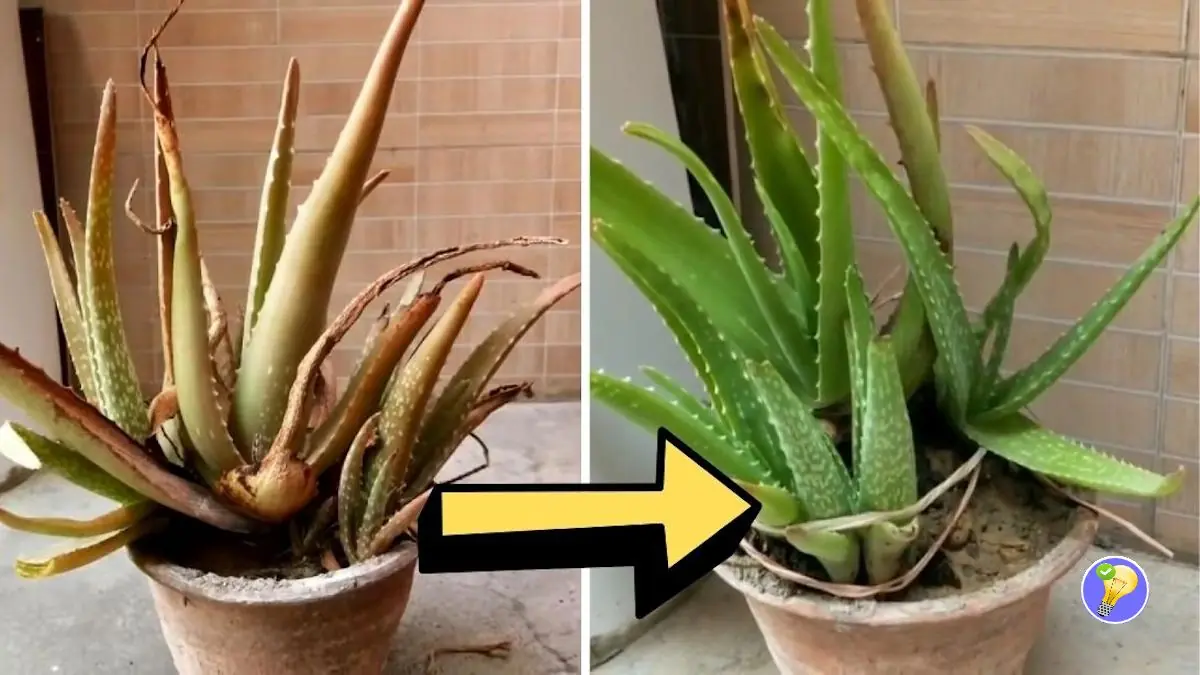Aloe plant turning pink – When aloe plants turn pink, they unveil a captivating tale of resilience, adaptation, and the intricate interplay between nature and nurture. This phenomenon, far from being merely an aesthetic quirk, offers a window into the plant’s inner workings, revealing hidden stresses, environmental influences, and even potential therapeutic properties.
As we delve into the science behind aloe plants turning pink, we’ll uncover the physiological triggers, explore the environmental factors that shape their coloration, and examine the implications for plant health and growth. Along the way, we’ll unravel the mysteries of this remarkable botanical transformation, providing practical insights for cultivating and appreciating these fascinating plants.
Understanding the Color Change in Aloe Plants

Aloe plants, renowned for their medicinal and aesthetic qualities, can exhibit a fascinating change in coloration, turning from their characteristic green to a vibrant pink. This transformation is triggered by a combination of physiological and environmental factors.
The primary cause of aloe plants turning pink lies in their response to stress. When exposed to adverse conditions, such as intense sunlight, extreme temperatures, or water scarcity, aloe plants produce a pigment called anthocyanin. This pigment acts as a protective mechanism, shielding the plant’s tissues from damage caused by ultraviolet radiation and other environmental stressors.
Impact of Environmental Factors
Environmental factors play a crucial role in the intensity and timing of aloe plants’ pink coloration. Prolonged exposure to direct sunlight stimulates anthocyanin production, leading to a more pronounced pink hue. Additionally, lower temperatures, particularly during the night, can enhance the pink coloration. This is because cold temperatures slow down the breakdown of anthocyanin, allowing it to accumulate in the plant’s tissues.
Examples of Pink Aloe Species
Several aloe species are known to exhibit pink coloration under certain conditions. Some notable examples include:
- Aloe vera var. rubroviolacea: This variety of aloe vera produces leaves with a distinct pinkish-purple hue.
- Aloe arborescens: Commonly known as the tree aloe, this species develops pink-tinged leaves when exposed to stress.
- Aloe humilis: This dwarf aloe species displays a delicate pink coloration on its leaves during the cooler months.
Potential Causes and Implications: Aloe Plant Turning Pink
:max_bytes(150000):strip_icc()/GettyImages-519174925-5c5c7a3146e0fb0001f24d90.jpg)
The rosy hue in aloe plants can stem from various factors, including environmental stressors, pathological conditions, and nutritional deficiencies. These changes in coloration may provide insights into the plant’s health and growth patterns.
Stress Factors
- Sunlight Exposure: Intense or prolonged exposure to sunlight can trigger the production of anthocyanins, pigments responsible for the reddish or purplish coloration in plants. This serves as a protective mechanism against sun damage.
- Temperature Fluctuations: Extreme temperatures, both high and low, can induce stress in aloe plants, leading to the accumulation of anthocyanins as a coping mechanism.
- Water Stress: Drought conditions or excessive watering can disrupt the plant’s water balance, causing physiological stress and subsequent pink discoloration.
Pathological Conditions, Aloe plant turning pink
- Fungal Infections: Certain fungal pathogens, such as Colletotrichum and Fusarium, can cause pink or reddish lesions on aloe leaves.
- Viral Infections: Viral diseases, including the Aloe mosaic virus, can lead to mosaic patterns of discoloration, including pink or purplish hues.
- Bacterial Infections: Bacterial infections, such as soft rot caused by Erwinia species, can cause tissue damage and discoloration, resulting in a pinkish appearance.
Nutritional Deficiencies
- Nitrogen Deficiency: Insufficient nitrogen levels in the soil can hinder chlorophyll production, resulting in a pale or yellowish coloration. However, under certain conditions, the plant may develop pink or reddish hues as a response to nitrogen deficiency.
- Phosphorus Deficiency: Phosphorus plays a crucial role in energy metabolism. When phosphorus is deficient, plants may exhibit stunted growth and a reddish or purplish discoloration, particularly in the leaves.
- Potassium Deficiency: Potassium is essential for water regulation and nutrient transport. Potassium deficiency can cause leaf margins to turn brown or pink, accompanied by stunted growth.

While the aloe plant’s leaves may turn pink when exposed to excessive sunlight, other plants exhibit distinct color changes under different environmental conditions. For instance, the mexican blue sage plant , native to Mexico and Central America, displays vibrant blue flowers that bloom in the summer months.
Interestingly, the aloe plant’s leaves may also develop a pinkish hue due to stress caused by drought or extreme temperatures, serving as a natural indicator of the plant’s need for water or shade.
The aloe plant, known for its medicinal properties, can turn pink when exposed to stress or excessive sunlight. This is due to the production of anthocyanins, pigments that give plants their red, purple, and blue hues. Interestingly, the purple calla lily plant also produces anthocyanins , which contribute to its vibrant purple color.
While the aloe plant’s pink hue is a sign of stress, the purple calla lily’s purple hue is a natural adaptation that attracts pollinators and protects the plant from UV radiation.
When an aloe plant turns pink, it is usually a sign that it is getting too much sunlight. To prevent this, you can move the plant to a shadier location. If you are using a planter with coco liner , make sure that the liner is not too thick, as this can also block out too much sunlight.